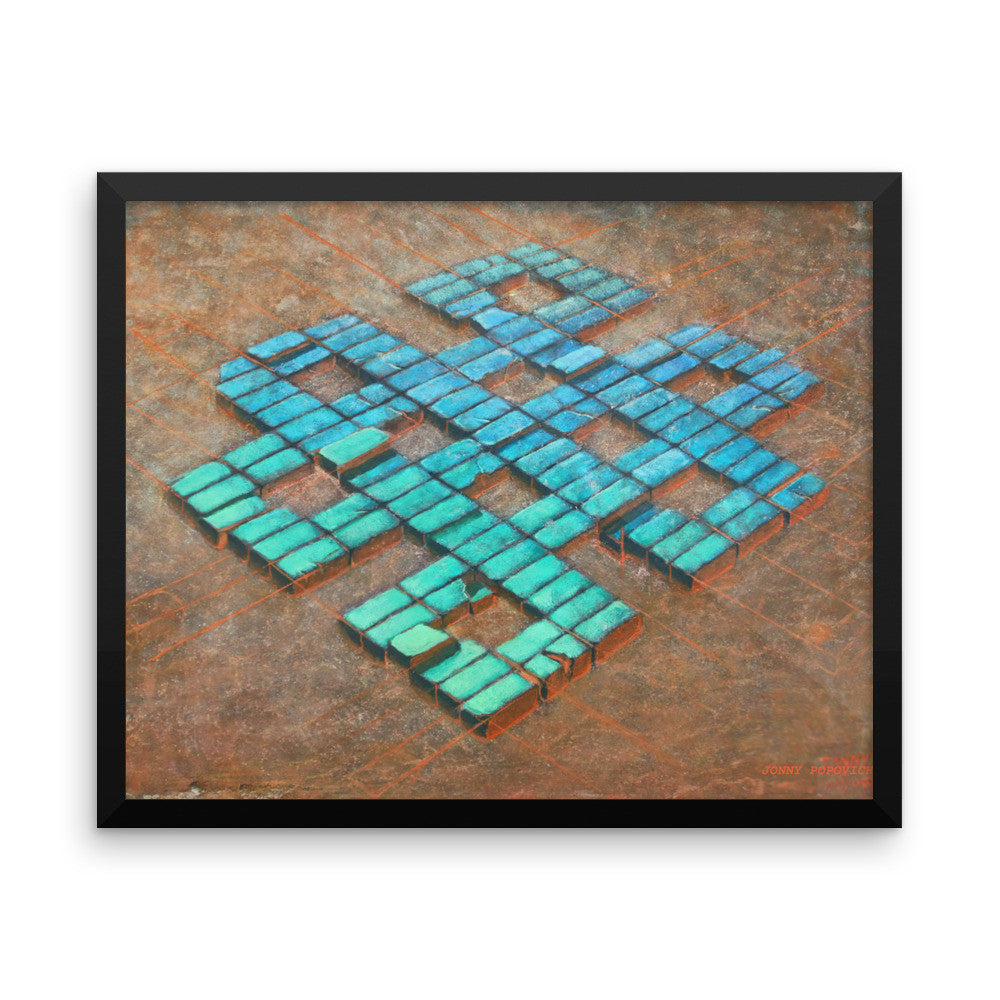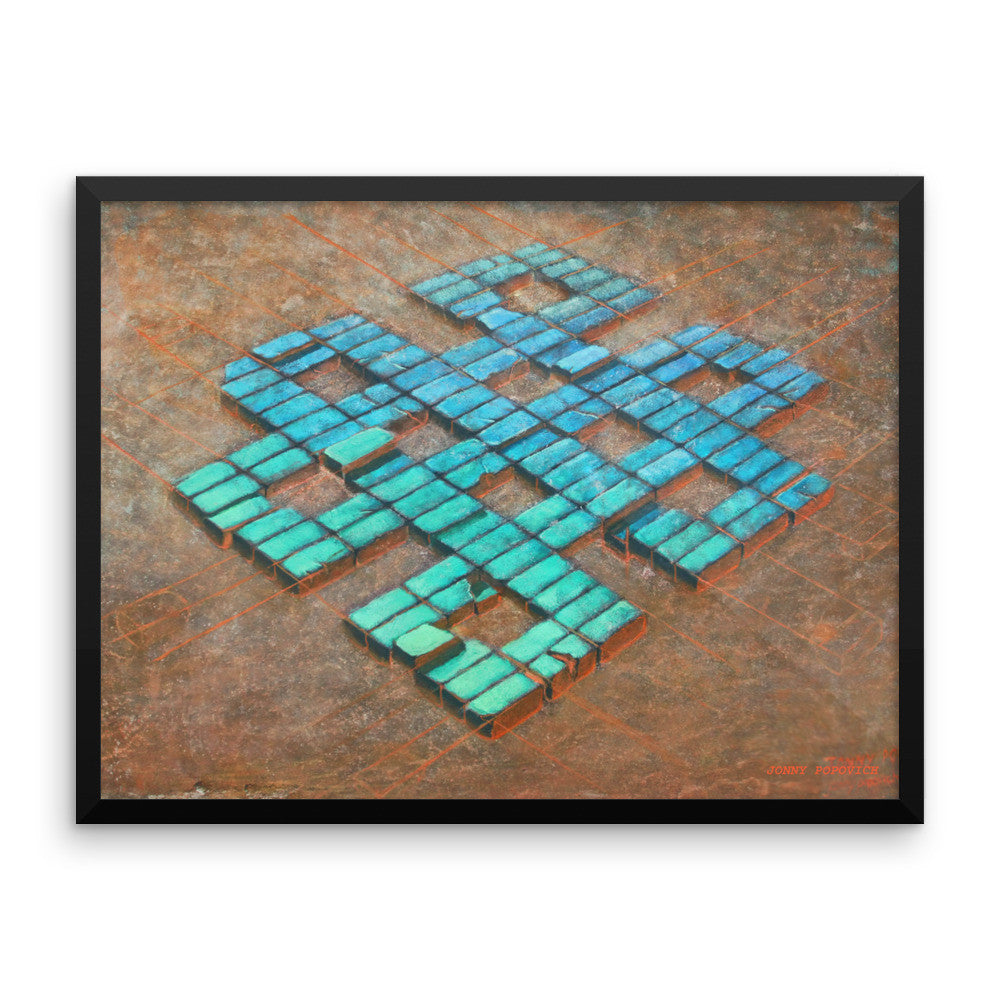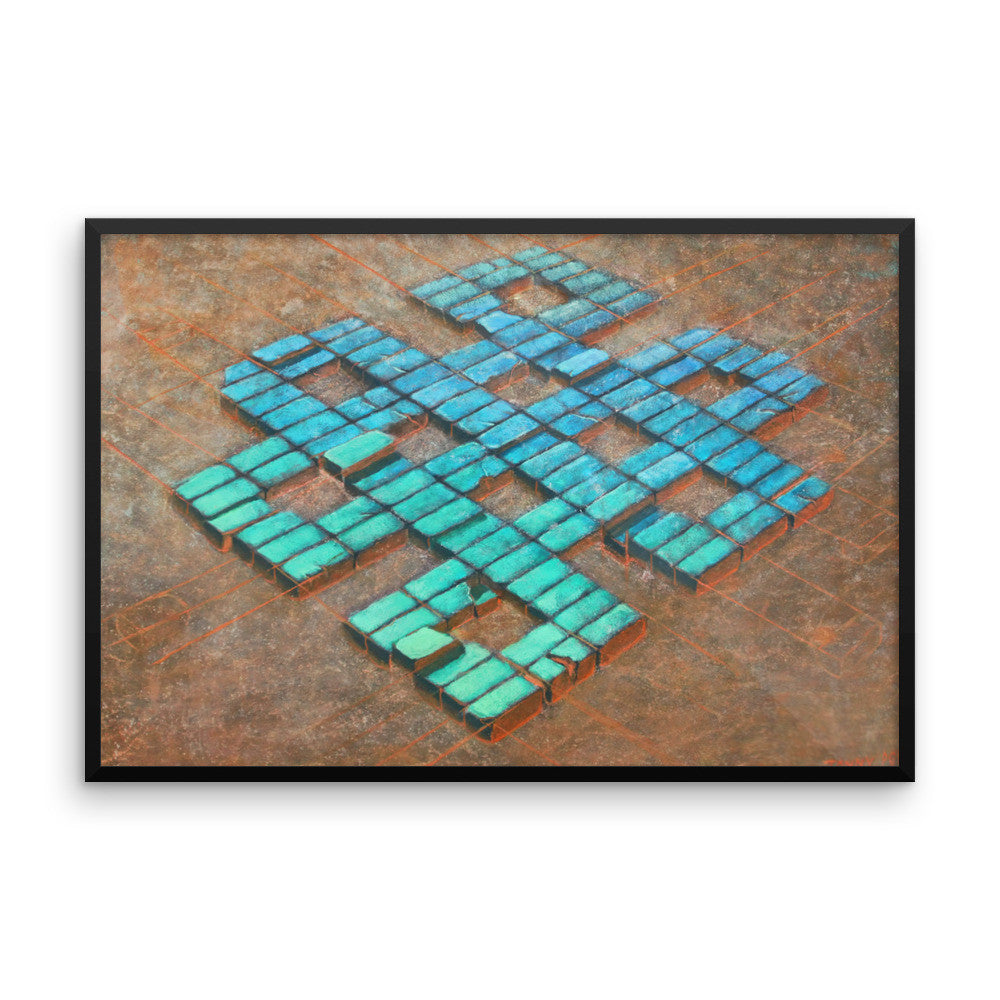
"Infinite Knot" Framed poster
This mural, which I painted on the streets of Kathmandu, is my spin on the ancient Indian symbol known as The Infinite Knot, or Shrivatsa, in Sanskrit. My sister and I came across this symbol frequently on our trek in the Himalayas, and I really like it. I wanted to give it more substance as an image, both visually and symbolically. Traditionally in Tibetan Buddhism it signifies "the dramatic interplay and interaction of the opposing forces in the dualistic world of manifestation, leading to their union, and ultimately to harmony in the universe. This fact is amply reflected in the symmetrical and regular form of the endless knot.
The intertwining of lines reminds us how all phenomena are conjoined and yoked together as a closed cycle of cause and effect. Thus the whole composition is a pattern that is closed on in itself with no gaps, no beginning or end, leading to a representational form of great simplicity and fully balanced harmony. Also a representation of the Buddha’s teaching that religious thought and material life are intertwined, the knot additionally conveys that the search for enlightenment need not mean giving up worldly responsibilities."
I chose to depict the symbol comprised of bricks, shifting at certain junctures and containing cracks, which symbolize the state of Nepal's political and infrastructural tumult and uncertainty at the time I visited. Innumerable bricks, in standing buildings or formless heaps, were often the first thing to meet my eye anywhere I've been in Kathmandu and other cities in Nepal. Despite the flux and fragmentations in my image, there remain no gaps in the infinite knot. This symbolizes the broader-picture continuity and potential resolve that encompasses Nepal's instability at the time. One of the wonderful things about painting murals in underdeveloped cities in Nepal and India, is the intimacy of the painting experience with locals. Like a few other murals, I simply knocked on the door of the building I wanted to paint, and asked the owner if I could make some art. In this case it was a small general shop, and every day the young boys of the store-owner would make tea for me as I painted their building and we would sit down together and talk.
These posters are printed on thick, durable, matte paper. printed on archival, acid-free paper.


